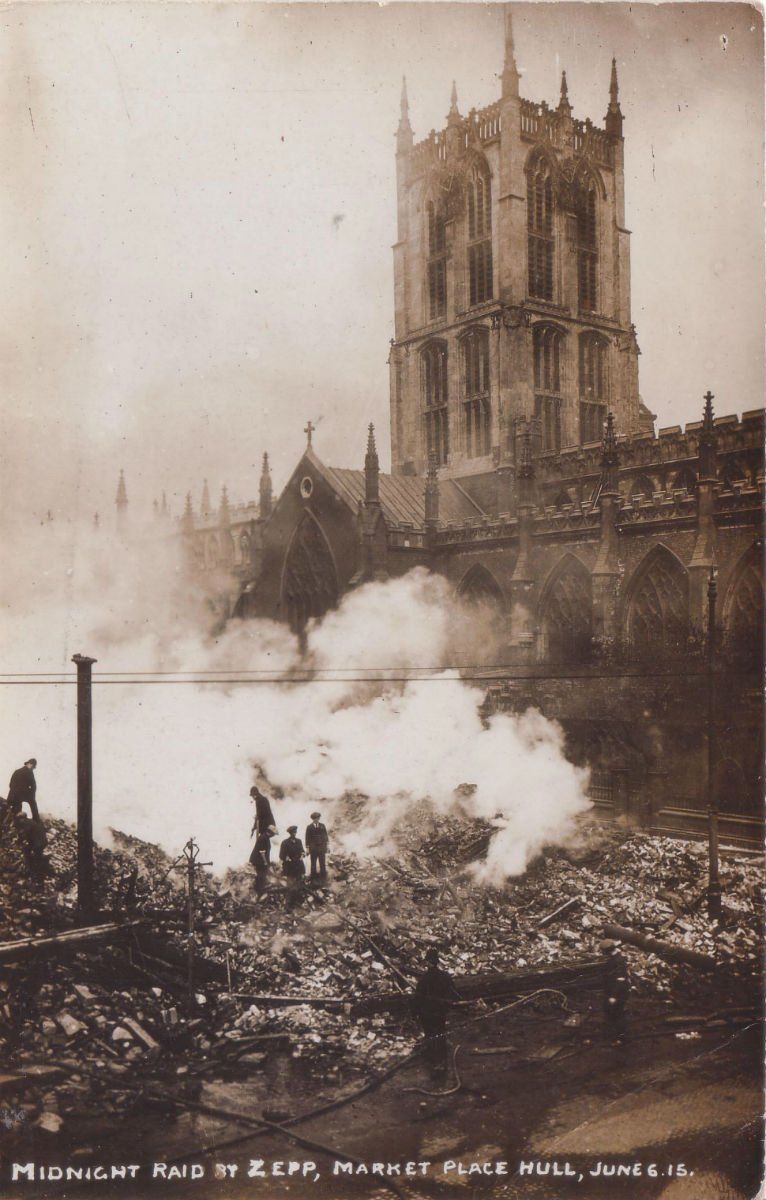ZEPPELINS, GOTHAS & 'GIANTS'
THE STORY OF BRITAIN'S FORGOTTEN BLITZ 1914-1918
6/7 June 1915
Bombed:
E. Yorks & Lincs.
On 6 June 1915, naval Zeppelin L 9, commanded by Kapitänleutnant Heinrich Mathy, set out to attack London ‘if possible, otherwise a coastal town according to choice.’ Weather conditions did not favour London so Mathy targeted Hull. Delayed by ground mist, Mathy finally located Hull and began his attack shortly before midnight, coming in over the King George V dock. Hull had no AA-guns for defence but the guns of HMS Adventure, under repair in Earle’s Yard, ineffectively engaged L 9. The route taken by L 9 is a little confused as it initially attacked from east to west, then turned and dropped more bombs as it flew back in the opposite direction. According to a newspaper report, the first bomb to cause serious damage fell on Walter’s Terrace, Waller Street, demolishing 14 houses and killing four people. Another bomb, in East Street off Clarence Street, killed three. L 9 continued dropping bombs; crossing the River Hull bombs burnt out the well-known Edwin Davis’ drapers store, narrowly missing Holy Trinity church. Other fatalities occurred at Blanket Row (3) and Edwins Place, off Porter Street (3). In South Parade and St. Thomas’s Terrace, off Campbell Street, bombs claimed five more lives. Other bombs took the total fatalities up to 26 with 40 injured. The official reports traced a total 13 high explosive (HE) and 39 incendiary bombs, which destroyed about forty houses and shops. The raid was the costliest of the war to date.
After leaving Hull, Mathy took L 9 out over Grimsby where he released at least six incendiary bombs. One landed in a railway siding setting fire to two empty goods trucks, two in the Royal Dock, one in Fish Dock Road, another near a railway crossing and one in Freeman Street, near St. Andrew’s Church. Damage was negligible.
Only one defence aircraft, a BE2c from RNAS Yarmouth, was in the air during the approach of L 9, but failed to locate it.
There was significant success elsewhere that night though. In Belgium, RNAS pilots J.P Wilson and J.S. Mills bombed the Zeppelin shed at Evère, destroying Linnarz’s LZ 38 inside, which had bombed London just six days earlier. Meanwhile, Flight sub-Lieutenant R.A.J. Warneford destroyed LZ 37 in the air over Ghent. Both Zeppelins had flown aborted missions against England that night.
Casualties: 26 killed, 40 injured
Damage: £44,795
Follow Us
© Ian Castle 2021
